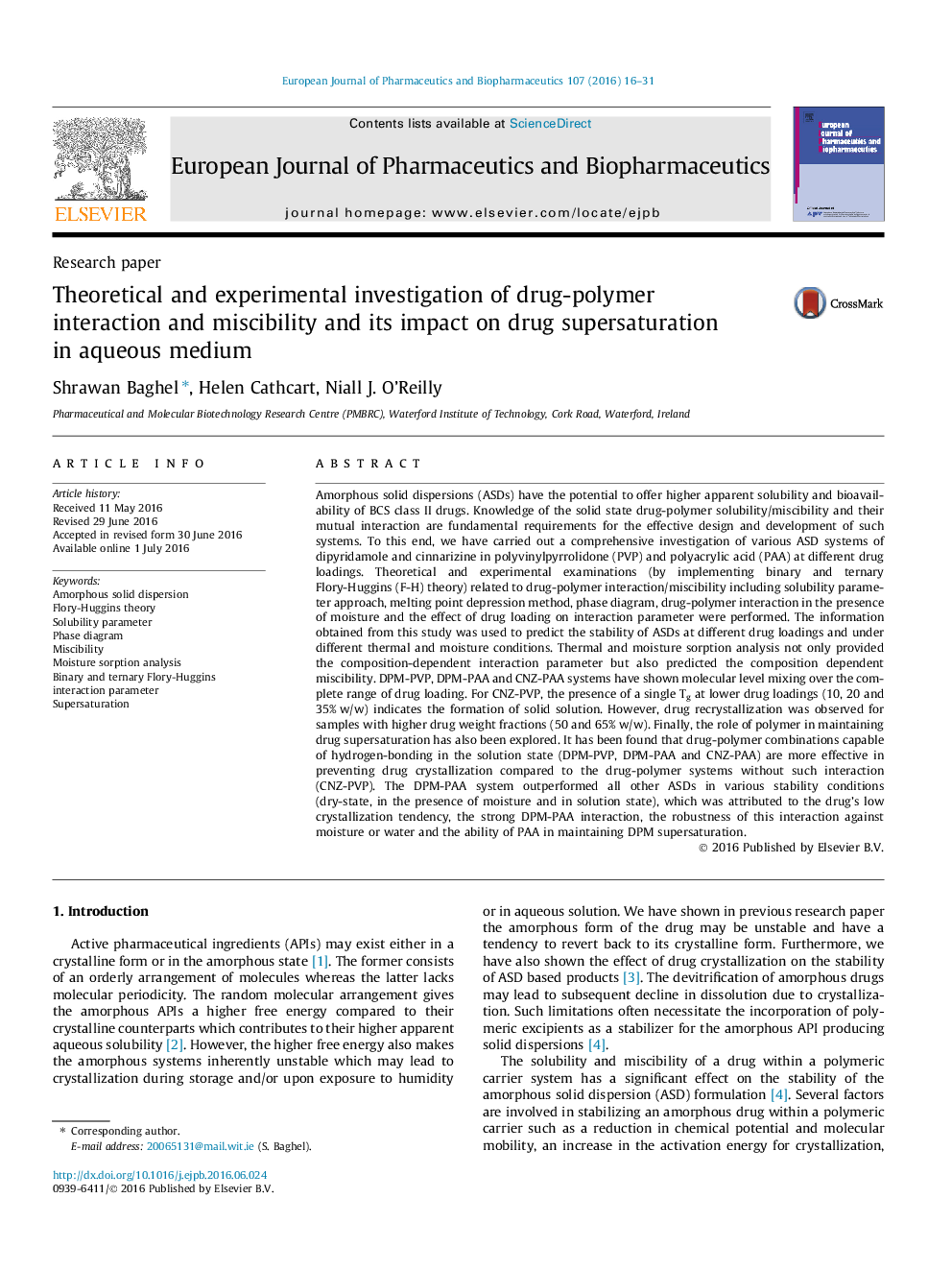| کد مقاله | کد نشریه | سال انتشار | مقاله انگلیسی | نسخه تمام متن |
|---|---|---|---|---|
| 2083177 | 1545316 | 2016 | 16 صفحه PDF | دانلود رایگان |
Amorphous solid dispersions (ASDs) have the potential to offer higher apparent solubility and bioavailability of BCS class II drugs. Knowledge of the solid state drug-polymer solubility/miscibility and their mutual interaction are fundamental requirements for the effective design and development of such systems. To this end, we have carried out a comprehensive investigation of various ASD systems of dipyridamole and cinnarizine in polyvinylpyrrolidone (PVP) and polyacrylic acid (PAA) at different drug loadings. Theoretical and experimental examinations (by implementing binary and ternary Flory-Huggins (F-H) theory) related to drug-polymer interaction/miscibility including solubility parameter approach, melting point depression method, phase diagram, drug-polymer interaction in the presence of moisture and the effect of drug loading on interaction parameter were performed. The information obtained from this study was used to predict the stability of ASDs at different drug loadings and under different thermal and moisture conditions. Thermal and moisture sorption analysis not only provided the composition-dependent interaction parameter but also predicted the composition dependent miscibility. DPM-PVP, DPM-PAA and CNZ-PAA systems have shown molecular level mixing over the complete range of drug loading. For CNZ-PVP, the presence of a single Tg at lower drug loadings (10, 20 and 35% w/w) indicates the formation of solid solution. However, drug recrystallization was observed for samples with higher drug weight fractions (50 and 65% w/w). Finally, the role of polymer in maintaining drug supersaturation has also been explored. It has been found that drug-polymer combinations capable of hydrogen-bonding in the solution state (DPM-PVP, DPM-PAA and CNZ-PAA) are more effective in preventing drug crystallization compared to the drug-polymer systems without such interaction (CNZ-PVP). The DPM-PAA system outperformed all other ASDs in various stability conditions (dry-state, in the presence of moisture and in solution state), which was attributed to the drug’s low crystallization tendency, the strong DPM-PAA interaction, the robustness of this interaction against moisture or water and the ability of PAA in maintaining DPM supersaturation.
Figure optionsDownload high-quality image (114 K)Download as PowerPoint slide
Journal: European Journal of Pharmaceutics and Biopharmaceutics - Volume 107, October 2016, Pages 16–31
